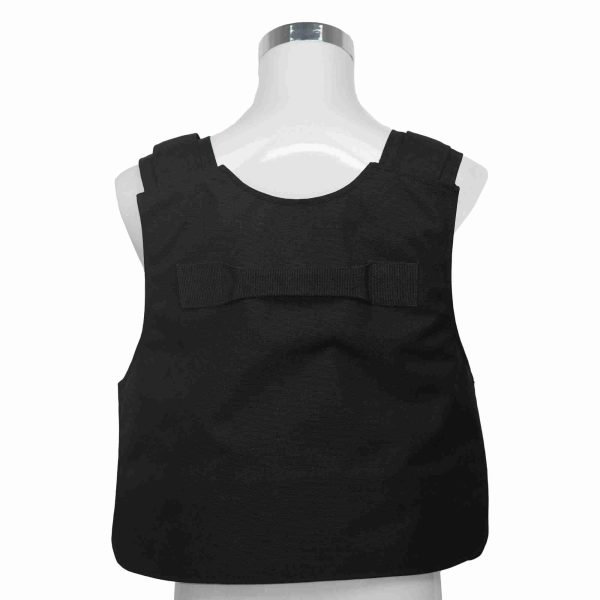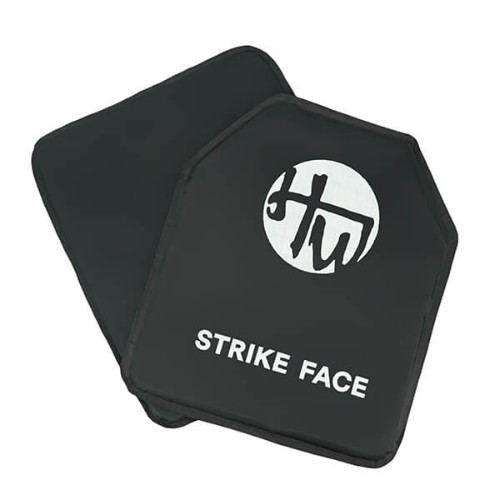Soft body armor is an essential tool for personal protection. It provides lightweight, flexible defense against handguns and shotguns while allowing freedom of movement. In this guide, we explain how soft armor works, the materials used, its benefits and limitations, and tips for choosing and caring for it.

What Is Soft Body Armor?
Soft body armor is a type of protective vest made from flexible ballistic fabrics. Common materials include Kevlar® and UHMWPE (ultra-high-molecular-weight polyethylene). Unlike hard armor plates, soft armor bends with your body, allowing freedom of movement and daily comfort.
Soft armor is designed to stop most handgun rounds and shotgun threats. Because of its flexibility and relatively low weight, it is often used by police officers, security personnel, and civilians who want reliable protection without sacrificing mobility. Many soft armor panels are also made to fit under clothing, making them suitable for covert use.
How Does Soft Body Armor Work?
Soft armor works by absorbing and dispersing the energy of a bullet. When a projectile strikes the vest, the fibers in the armor catch the bullet and spread the force over a larger area. This reduces penetration and limits blunt force trauma to the wearer.
Unlike hard plates, soft armor does not rely on metal or ceramic layers to stop bullets. Instead, it uses multiple tightly woven layers of high-strength fibers. The design is optimized to stop handguns and shotgun threats while remaining light and flexible.
Soft armor is rated by the NIJ (National Institute of Justice) standard. Typical protection levels include:
- Level IIA – stops low-velocity 9mm and .40 S&W rounds.
- Level II – protects against higher-velocity handgun rounds.
- Level IIIA – the highest soft armor level, capable of stopping most handgun threats.
It’s important to note that soft armor cannot reliably stop rifle rounds. For rifle threats, hard armor plates are required.
Types of Soft Body Armor
By material:
- Kevlar® – an aramid fiber known for high tensile strength. It is widely used in body armor due to its durability and effectiveness.
- Twaron® – another aramid fiber similar to Kevlar, offering strong ballistic resistance.
- UHMWPE – an extremely strong polyethylene fiber. Panels made from UHMWPE are usually lighter and thinner than aramid panels.
By form factor:
- Concealable panels/vests — slim, worn under clothes. Best for plainclothes or daily carry.
- Tactical/overt soft vests — visible, with pockets and MOLLE. Designed for duty rigs and carrying gear.
- Insert panels — soft panels sized to fit into carriers or plate pockets. Flexible use: covert or overt.
Advantages of Soft Body Armor
Soft armor provides several benefits over hard plates:
- Lightweight and comfortable – easier to wear for long periods.
- Wider coverage – protects more of the torso, including sides and sometimes shoulders.
- Concealable – can be worn under clothing for covert protection.
- Versatile – suitable for everyday use, security duty, and personal defense.
- Cost-effective – generally cheaper than hard plates and full plate carriers.
- Layering options – some soft armor panels can accept optional trauma plates for added protection against rifle threats.
For many civilians and law enforcement officers, these advantages make soft armor a practical choice for routine protection.
Limitations of Soft Body Armor
Despite its benefits, soft armor has some limitations:
- Cannot stop rifle rounds – it is rated only for handgun and shotgun threats.
- Material degradation – exposure to heat, moisture, or UV light can weaken fibers over time.
- Shorter lifespan – compared with hard armor plates, soft armor generally lasts 5–10 years.
- Fit and thickness – higher protection levels can add bulk, which may reduce comfort or concealability.
Choosing soft armor that meets NIJ standards and fits your body correctly is critical for maximum safety.

How Long Does Soft Body Armor Last?
Soft armor typically has a shelf life of 5–10 years. The exact lifespan depends on the material, storage conditions, and usage.
Factors affecting durability include:
- Storage – keep armor in a cool, dry environment. Avoid direct sunlight.
- Exposure to heat or moisture – can weaken fibers and reduce protection.
- Usage and wear – frequent heavy use may shorten lifespan.
Inspection tips:
- Check for cuts, tears, or punctures in the cover.
- Look for compressed or uneven areas in the panels.
- Inspect stitching and seams.
- Replace armor if it shows damage or significant wear.
Proper storage, handling, and regular inspection ensure the vest performs as intended.
When Should You Choose Soft Armor?
Soft armor is ideal in situations where mobility, comfort, and concealment matter more than rifle protection. It is suitable for:
- Law enforcement officers who patrol with handguns.
- Security personnel who need daily protection without heavy equipment.
- Civilians who want personal defense against handgun threats.
Soft armor can also be layered with hard plates when higher protection is required. This allows for versatile setups depending on the threat level and mission needs.
How to Care for Soft Body Armor
Proper care extends the life and effectiveness of soft armor:
- Cleaning – do not machine wash panels. Follow manufacturer instructions. Clean only the outer cover if necessary.
- Storage – keep in a cool, dry area away from sunlight. Avoid folding panels tightly.
- Inspection – check panels every 6–12 months, or after heavy use.
- Avoid chemicals – solvents and harsh cleaners can weaken fibers.
Good care ensures soft armor remains protective for years.
Soft Armor vs Hard Armor: Quick Comparison
| Feature | Soft Armor | Hard Armor |
|---|---|---|
| Weight | Light | Heavy |
| Flexibility | High | Low |
| Threat Level | Handgun | Rifle |
| Comfort | High | Moderate |
| Coverage | Wider | Limited |
| Concealability | Easy | Difficult |
This table shows why soft armor is better for daily wear, while hard armor is essential for rifle protection and high-risk operations.
Conclusion
Soft body armor provides comfort, flexibility, and reliable protection against handgun threats. It is ideal for everyday use, personal defense, and law enforcement duty wear. While it cannot stop rifle rounds, it can be layered with hard plates for additional protection. Choosing the right size, level, and fit ensures maximum safety.
Proper care, inspection, and understanding your threat level are key to making soft armor work effectively for you.

Partner with H WIN For High Quality Soft Armor
If you are looking for certified soft body armor and tactical solutions, consider partnering with H WIN. Our products meet NIJ standards, and we offer support for law enforcement, security teams, and responsible civilians. Explore partnership options for bulk orders, custom options, or professional guidance on protective gear.
